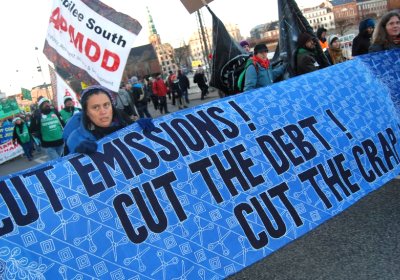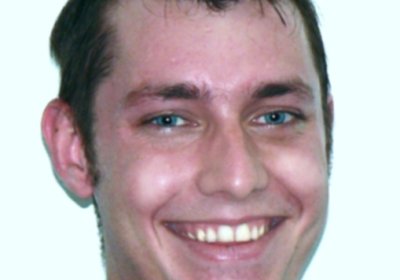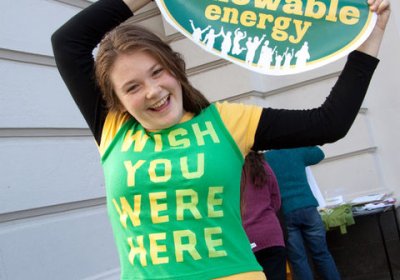In late June, two important events related to renewable energy took place.
On June 24, the Senate passed changes to the government's renewable energy target, removing the bias towards small-scale energy systems that put many wind farm projects on hold. The scheme set a 20% renewable energy target by 2020.
Climate change
NASA climate scientist James Hansen has called them “factories of death”. British columnist George Monbiot has said “everything now hinges” on stopping them. US climate writer Bill McKibben is prepared to be arrested to have them shut down.
But Australian state governments don’t get it — they are still enchanted by coal-fired power stations.
Climate campaigners say Australia should urgently replace existing coal-fired power plants with renewable energy, but 12 new “death factories” are slated to be built in Australia over the next few years.
On June 11 at the close of climate talks in Bonn, Germany, UN climate chief Yvo de Boer tried to put a positive spin on the outcome. “This all in all is a big step forward making much more possible in Cancun”, he said, referring to the next big climate conference that takes place in Mexico in November.
However, big step or not, the conference outcomes kept the world sprinting headlong towards a climate catastrophe.
Ruth Ratcliffe works in the community sector in the southern suburbs of Adelaide. She is an activist in the Adelaide climate action movement and has supported many other campaigns for social justice including the campaign against the racist Northern Territory intervention. Below she outlines why she is standing for the Socialist Alliance for the South Australian senate.
***
Protests will take place across the country on July 17 to demand the federal and Victorian state governments close down Australia’s dirtiest power station and replace it with clean energy by 2012.
The call for a national day of action was issued by groups active in the “Replace Hazelwood” campaign, including Melbourne’s Climate Action Centre and Environment Victoria.
The call has been endorsed by the Community Climate Network, which brings together more than 100 climate action groups nationwide.
On June 15, climate sceptics held a forum at the Brisbane Irish Club. This forum was the subject of a protest by climate change activists. Ewan Saunders is the Socialist Alliance candidate for Brisbane who helped organise the protest. His speech is reprinted below.
***
Ian Plimer, Bob Carter, Peter Ridd: these are the real climate fraudsters, never mind the so-called scandals around a few emails last year.
On June 3, a small group of protesters educated Edgewater residents about the threat climate change poses to their suburb. Edgewater, one of Melbourne’s newest suburbs, could be partly underwater if climate change is not stopped. According to council data, 370 Maribyrnong homes were affected during floods in 1974.
The Rudd ALP government was elected on a promise to take serious action on climate change. Yet it hasn’t acted and Australia’s greenhouse gas emissions — already the developed world’s worst per person — are on the rise again.
In late May, the Department of Climate Change announced emissions had risen in the December 2009 quarter, rebounding from a dip caused by the global economic crisis. Most of the rise came from the energy sector, said the May 28 Sydney Morning Herald.
The most serious controversy that has emerged in the climate movement this year is probably about the role of natural gas in a transition to a zero-emissions society.
The national climate summit in March did not debate gas, but decisions taken there have influenced the debate. A decision of that summit was to campaign to “replace Australia's dirtiest coal-fired power station, Hazelwood, with clean energy by 2012”.
Bill McKibben is one of the world’s best-known climate activists and writers. He was the founder of the 350.org campaign, which organised more than 5200 protests in 181 countries on October 24. CNN called the 350.org protests “the most widespread day of political action in the planet's history”.
The melting of the Arctic ice cap is one of the most foreboding signs of dangerous climate change.
If too much ice melts, it will set off natural feedback loops that warm the planet even faster and disrupt weather patterns.
A month ago, satellite data from the US National Snow and Ice Data Center (NSIDC) suggested the Arctic sea ice was growing back. In early April, the ice cover was close to the 30-year average.
But in recent weeks, the NSIDC has recorded a rapid drop in ice cover. By late May, the ice cover had dropped below what it was in May 2007 — the lowest year on record.
The following is abridged from a motion unanimously passed on May 22 by the general membership of the Climate Emergency Network, Victoria. For more information on CEN, visit the group's website.
***
Over the past decade or so, a climate movement has developed in many countries, both developed and developing. There has been a tendency for the climate movement in North America, Europe, and Australia to focus on ecological modernisation as a climate change mitigation strategy.
- Previous page
- Page 15
- Next page









